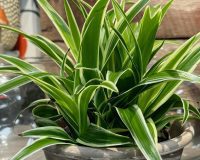Location
Where should a garden be located? First, find a spot located on a fairly level plot of ground. This ensures proper drainage and is typically easier to maintain. You don’t want to choose a low spot where the soil is too moist or a high spot that water will drain away from.
Also, make sure your garden plot isn’t too close to large mature trees. The roots will be difficult to deal with, along with the shade. Also, check to see how much sunlight the area will get. Most veggies love 6-8 hours of direct sun. Look around to see if there are any nearby structures, fences, or trees that will shade the area. Also, take note of shade and sunlight patterns and remember they change throughout the year.
It is also important to choose a location that is somewhat protected from wind. Remember winds typically come from a southwest or western direction in summertime.
Layout
First, decide how much space you can dedicate to a garden and then choose a garden type. The most widely used vegetable garden design is a traditional row garden. It consists of vegetables planted in rows. It’s great for large families, or for those who wish to produce large quantities. But can be easily adapted to any size.
Another gardening method that is popular is called Square Foot Gardening. Square Foot Gardening consists of raised garden beds that are partitioned into 12” squares and filled with a nutrient-rich soilless mix. It utilizes vertical space, crop rotation, and makes a very productive garden in a smaller space. Best of all it reduces the time you’ll need to tend to it and there are virtually no weeds.
If you don’t have space to dedicate to a garden, you can still grow vegetables in pots or add them to your landscaping. Peppers, tomatoes, leafy greens, herbs, or strawberries (just to name a few) can all be grown in pots. The community gardens are also a great place to grow your own.
Planting
In the springtime, begin working the soil once its dry enough. Simply take a handful of soil, pack it together, and see if it crumbles easily. If it crumbles, it’s ready to rototill or spade, if it is overly sticky, wait until it dries out more. No matter what your soil is like, it will benefit from adding organic material such as our weed free blended compost. Adding organic material on a yearly basis gives nutrients and improves soil texture. Rototill composted organic matter into your soil 8-12” deep. Soil Activator Humate granules should also be mixed into the garden before planting.
Care
When watering the garden, its best to water from the bottom. Overhead sprinklers leave water on the leaves which can lead to fungus or the spread of disease. For best results leave a hose slowly running under plants and soak them. Or, use drip hoses. Watering early in the day works best.
You’ll need to fertilize periodically over the summer. Consult with us to find the best fertilizer for your needs. If you have any bug or weed problems check with us for the best management options. Weeds can be prevented with woven weed-block fabrics, or weed preventing granules.


Fertilome Garden Fertilizer is an Excellent all purpose fertilizer for your vegetable garden. It provides a generous supply of nutrients needed for healthy growth. Use it throughout the summer.
Season Starter Plant Protectors Plant tomatoes, peppers, and more up to 6 weeks earlier and extend your growing season with Season Starter Plant Protectors.
© Eagle Rock Nursery 1850 Rollandet Idaho Falls, ID (208) 529.3305 eaglerocknursery.com







